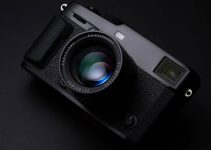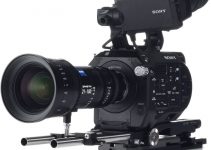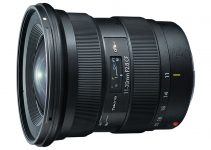The Canon 1DC made a huge splash in the filmmaking community back in 2012 when it was officially introduced to the world. Fast forward seven years later and it is still one of the best DSLR cameras out there capable of shooting cinematic DCI compliant 4K 24p video without any downscaling straight out of the box. But how does it compare to modern technology and cameras like the Canon C200?
That’s what we are going to find out together with Armando Ferreira who puts the DSLR against its much younger EOS counterpart. The results are certainly interesting even from a modern filmmaker’s perspective. So, let’s take a closer look.
The biggest downside of the Canon 1DC back in 2012 was its retail price. At the time, the unit was selling for the whopping $12,000 whereas now you can find it used for as low as $2,500 which is a much reasonable investment.
What’s more important, for the immensely reduced price, you can now get an unrivaled and extremely appealing cinematic quality which in combination with the flexibility that the built-in C-Log profile provides, would give you access to the highly desired organic film look that digital filmmakers have been going after since the early days of the so-called DSLR revolution.
Sure, with the 1DC you won’t get any built-in image stabilization or autofocus capabilities, nor you’ll have access to a flip screen or an edit-friendly codec, but if you treated it purely as a cinema camera, the model is definitely a viable option even in 2019.
Back to the comparison, the Canon C200 is slightly sharper and does have a better highlight rolloff compared to 1DC, especially when it comes to skin tones. The EOS cinema camera also has a little bit more dynamic range than its sibling, but overall the Log images coming straight out of the latter are more than impressive. According to Ferreira, the 1DC 8-bit 422 footage is easier to color grade when compared to the 12-bit Raw samples captured on the Canon C200 while looking just as impressive.
On the other hand, Canon 1DC uses the cumbersome MJPEG (Motion JPEG) codec for processing 4K video. At nearly 3.6GB per minute, MJPEG is not a very efficient solution for compression even by today’s standards, which means that you’ll still need massive storage capacity to keep and back up the captured 4K footage, as well as a fast machine to edit it on.
Nevertheless, the Canon 1DC is more than capable 4K video capturing device even nowadays that could be an excellent B-cam option inside the Canon eco-system if not better than much newer offerings like the Canon EOS R.
In fact, when it comes to image quality, the aging DSLR would easily rival many of the modern mirrorless cameras, so it’s definitely an option that shouldn’t be overlooked by any professional filmmaker who takes capturing high-quality video seriously. What do you guys think? Would you pick a used Canon 1DC over a brand new EOS R as a B-cam to your C200? Let us know in the comments below.
[source: Armando Ferreira]
Disclaimer: As an Amazon Associate partner and participant in B&H and Adorama Affiliate programmes, we earn a small comission from each purchase made through the affiliate links listed above at no additional cost to you.
Claim your copy of DAVINCI RESOLVE - SIMPLIFIED COURSE with 50% off! Get Instant Access!





